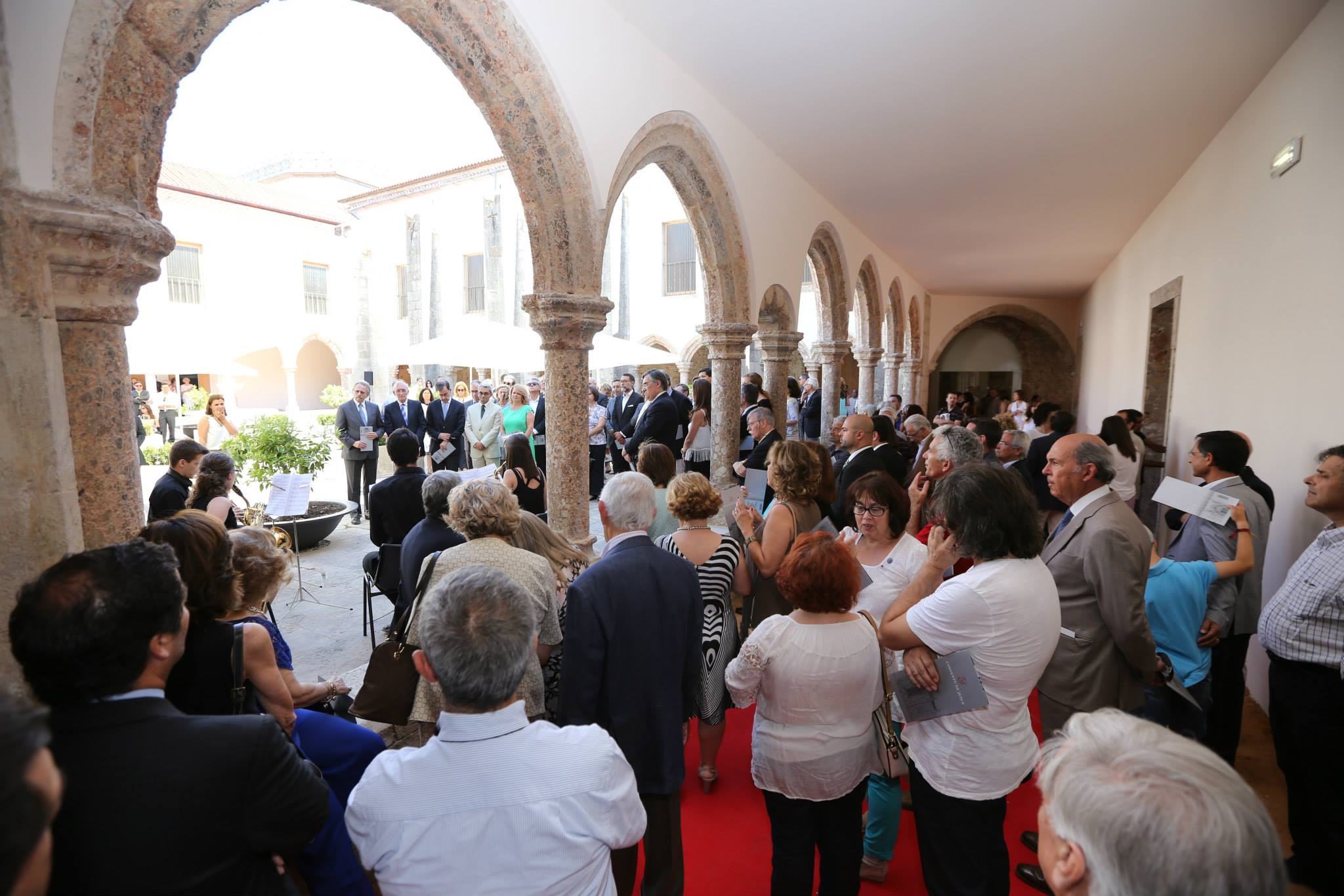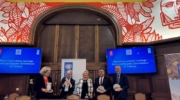The 7 Most Endangered 2013: Monastery in Setubal in Portugal reopens to the public
The 15th century Monastery in Setúbal in Portugal, listed among ‘The 7 Most Endangered’ heritage sites in Europe in 2013 by the leading European heritage organisation Europa Nostra and the European Investment Bank Institute, partially reopened to the public on 20 June 2015, after 23 years of closure. During this memorable event, the local authorities acknowledged the significant role played by the two European partners and thanked the Portuguese Historic Houses Association for nominating the monument for ‘The 7 Most Endangered’ programme. The first phase of the rehabilitation project has been successfully concluded. The priority is now to ensure the financing of the second phase which will fully restore and modernise this gem of Europe’s heritage.

The opening of the Monastery in Setúbal on 20 June 2015. Photo: Courtesy of Municipality of Setúbal.
Dozens of people, including representatives from local, regional and national governments, gathered for the official opening of the Monastery of Jesus in Setúbal. José-Maria Ballester, Council Member of Europa Nostra, and Guy Clausse, Dean of the European Investment Bank Institute, who took part in the mission undertaken by heritage and financial experts in September 2013, participated in the event. Hugo O’Neill, President of the Portuguese Historic Houses Association, and Guilherme d’Oliveira Martins, President of Centro Nacional de Culture, Europa Nostra’s representation in Portugal, were also in attendance.
“This early success of ‘The 7 Most Endangered’ programme is primarily due to the strong involvement of both the municipality and civil society in Setúbal, combined with good cooperation at local and national levels. I hope that such a successful formula can be repeated for the second phase,” stated Guy Clausse, Dean of the European Investment Bank Institute, also speaking on behalf of Europa Nostra.
The first phase of the project fundamentally consisted of the structural rehabilitation of the Monastery, and the total recovery of the western wing, which has now received part of the rich collection of the city’s museum. This first intervention, running from the end of 2012 to early 2015, was budgeted at 3.6 million euros – 65% of which was funded by the National Strategic Reference Framework (NSRF) 2007-2013 and 35% by the municipality of Setúbal.
In her address, the Mayor of Setúbal Maria das Dores Meira thanked the various stakeholders that have decisively contributed to the conclusion of the first phase of the rehabilitation of the Monastery, including Europa Nostra and the European Investment Bank Institute “for the steps they took at various levels, in particular towards the Portuguese Government”.
The second phase, with an estimated cost of 6 million euros, includes the complete rehabilitation of the monument, namely the northern and eastern wings (which will accommodate the entire collection of the local museum), the High Choir and its bell tower, the structure and ceiling of the Church of Jesus, and the square in front of the Church; as well as the construction of a new building, which will house the scientific, technical and administrative areas of the city’s museum.
“We will continue to work until the Monastery is fully returned to its former splendour. The Municipality will maintain its responsibility and is therefore available to cover 50% of the cost. However, the Portuguese Government needs to create favourable conditions so that the other 50% can be financed by European funds,” stressed the Mayor of Setúbal.
The Secretary of State for Culture Jorge Barreto Xavier stated that “the outcomes of this conservation work inspire confidence in the future” and highlighted his readiness “to work towards finding an appropriate solution to a heritage site which belongs both to Setúbal and to Europe”.
The inaugural event was enhanced by a musical performance and featured a guided tour of the exhibition displayed in the newly restored western wing.
Following a two-day mission to Setúbal and Lisbon in September 2013, Peter Bond, Technical Consultant provided by the European Investment Bank Institute, and Pedro Ponce de Léon, Scientific Council Member of Europa Nostra, presented the technical and financial report for the rehabilitation of Monastery of Jesus at a meeting in Brussels on 6 December 2013. The two experts took part in a second working visit to the monument in October 2014.
Watch video
Documentary on Monastery's rehabilitation
Media Coverage
National Public TV Station RTP
Printed Articles






